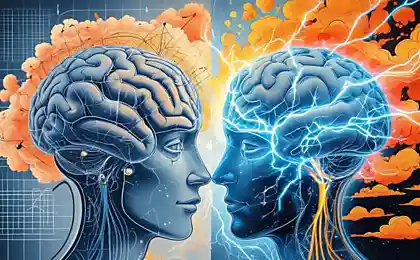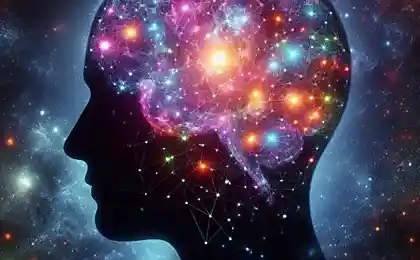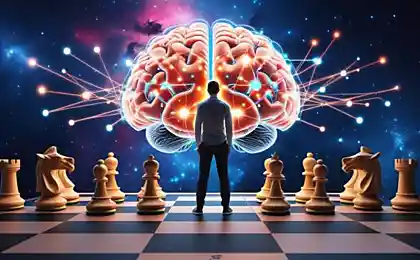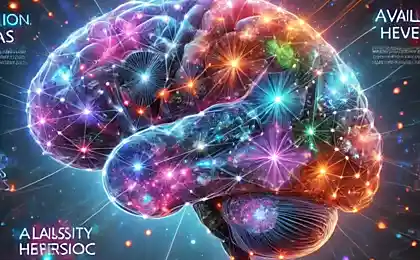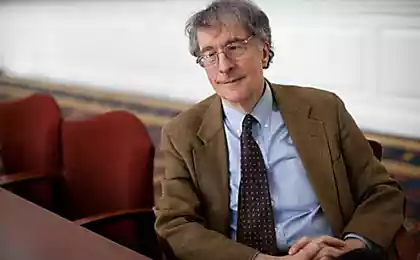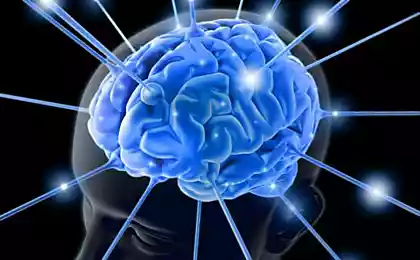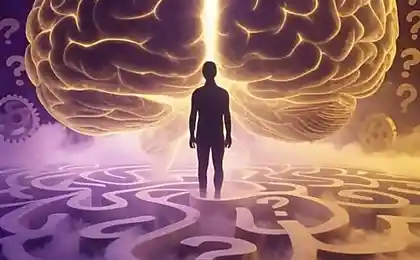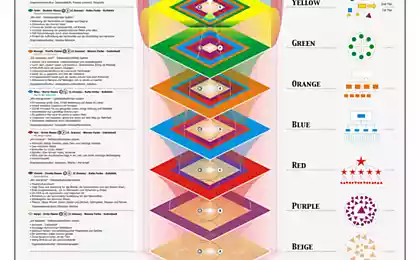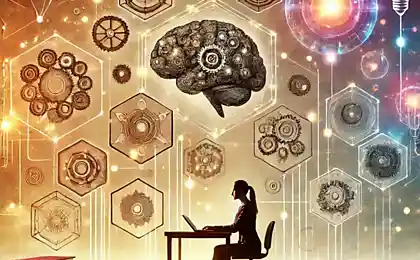528
Pitfalls of thinking: the main enemies of good decisions
Trap 1.
Steve Cole, Vice President for research and development non-profit HopeLab, which works to improve the health of children through advanced technology, said, "whenever you are confronted with the question: "What do I do that?” — ask yourself: “maybe there is a way to do this and that?"Very often it turns out to be possible."
For one major project, Cole and his team at HopeLab wanted to find a partner — a company that could develop a portable device capable of measuring the amount of exercise undertaken by children. In the Bay area of San Francisco there are at least seven or eight companies that could do the job. In a typical contract situation, HopeLab would have solicited offers from each company, and then would give the contract to the winner.
However, Cole went the other way: he organized the contest. He reduced the scope of the job so that it included only the first stage of the work, then hired five companies which were to operate independently from each other. This does not mean that it is five times exceeded its budget, being a nonprofit organization, HopeLab does not have unlimited resources. Cole knew that the information obtained in the first stage, will make follow-up more effective.
"Cole could calculate the advantages and disadvantages of working with each manufacturer, and then use analysis making a decision. But he would have remained in a narrow framework»
Cole was sure to get a correct device. Then he could either choose the one they like best, or combine the characteristics of several. Then, in the second stage, could weed out developers who have not listened to it or acted inefficiently. So Cole fought against the first villain, preventing to make decisions, — framework, which implies a tendency to stay in a narrow range and binary code.
We ask, "Should I break up with my partner or not?"— and have to ask: "How can I make our relationship better?»
We ask, "Should I buy a new car or not?"— and not "How to spend the money to bring the greatest benefit to the family?»
Cole, staging the contest, broke out of the trap. It was not self-evident step, he had to fight for his idea even within the company. "At first my colleagues thought I was crazy. That was worth some money and took some time. But now we all do. You get to meet a lot of people. You have to learn many different things about the production. When you get similar answers to the questions, you realize that they are correct, but in addition, learn to appreciate what makes the company different and unlike. You will never get such a result, if you talk to one person. And when five companies know that in parallel with them running the other four, they do everything I can".
Note the difference of this method from the "pros and cons". Cole could calculate the advantages and disadvantages of working with each manufacturer, and then use analysis making a decision. But he would have remained in a narrow framework. Implicitly it is assumed that there is only one manufacturer that can develop the perfect solution and that he can identify this manufacturer on the basis of received proposals.
Trap 2.
However, there is another, more subtle factor: if Cole met with the teams, he will necessarily be the favorite, the team to which it is attached. Although mind he possibly would understand that people who are nice to him personally, not necessarily create the best product, there would be a temptation to adjust the pros and cons in their favor. This usually occurs unconsciously: as the pros and cons are generated in our heads, we can be very easy to affect the arguments. We think that the comparison objectively, and in fact, the brain performs a special order of our intestines. In life we are used to quickly get an idea of the situation, and then look for information confirming our representation. And this addiction that's called "confirmation bias" — the second enemy that interferes to make the right decisions.
Here is a typical result of one of many studies: in 1960-ies, when medical research on the dangers of Smoking has not yet given such unequivocal results, smokers showed greater interest in reading the articles entitled "Smoking leads to lung cancer" than one with the title "Smoking causes lung cancer". To see what this can lead to bad decisions, imagine that your boss has studied the results of two studies under the title: "Data that confirms your point of view" and "Data that contradicts your point of view." Guess which it will quote at a staff meeting?
Fifty nine million four hundred forty seven thousand seven hundred eighty three
Researchers are constantly confronted with this fact. When people have the opportunity to gather information from all sides, they tend to choose the one that confirms their previous findings, beliefs, or actions. Political partisans seeking media that confirm their opinion, but seldom questioning their beliefs, wondering point of view of the other side. Consumers experiencing an insatiable desire to buy a new car or computer, looking for reasons to justify the purchase and not postpone it. The insidiousness of confirmation bias is that it can look very scientific. In the end, we collect data. The aforementioned Dan Lovallo — Professor, studies the ability to make decisions, said: "Confirmation bias is perhaps the biggest problem in business: in this trap, come across even very experienced people. They go out and collect data, they not occur that those can be biased."
At work and in life, we often pretend to want to hear the truth but in reality want to be assured that we are right. "These jeans make me look fat?""What do you think of my poem?"— such questions require honest answers. Or pathetic, the poor contestants who try to sing, though is unable to even correctly repeat the melody. After receiving a harsh rebuke from the judges, they are shocked. Crushed. And you realize: for the first time they have heard an honest opinion. Seeking to hear the confirmation, they focused their spotlights on praise and support from friends and family. It is easy to understand why, constantly receiving confirmation that they thought could be the new a domestic idol. It is a reasonable inference from the highly distorted data pool.
It is even more frightening: when we want something to be true, we highlight confirm, and then drawn conclusions from the highlighted scenes, congratulate ourselves on a reasoned decision. Oops.
Trap 3.
In his memoirs, "only the paranoid Survive" by Andrew grove recalls the difficult dilemma faced in 1985, as President of Intel whether he should close the line company for the production of memory chips? The Intel's business was built on memory. In fact, for some time the company was the world's sole source of memory, but by the late 1970s there were about a dozen competitors.
Meanwhile, a small team at Intel had developed another product, the microprocessor. In 1981 when IBM chose the Intel microprocessor as the brain of new personal computers, the company was able to take a breath, get out and create the additional capacity required for chip production.
At the time Intel became a company with two products: memory and microprocessors. Memory remained the main source of income. But in the early 1980s the competitive position in the memory business was threatened with Japanese companies.
"People returning from visits to Japan told scary things," writes grove. It was reported that one Japanese company at the same time designed several generations of memory: team 16K was on the same floor, the staff of the 64K were on the floor above, and above them was a team of 256K.
Customers of Intel have begun to sing the praises of the quality of Japanese memory. "In our opinion, the level of quality that is attributed to Japanese memory, went beyond the limits of the possible, said grove. — Our first reaction was denial: it can't be true. And we did the same as most people in a similar situation, was actively denied this information. And began to work on the quality of their product only when I got confirmation that the overall assessment of fair. We were behind".
In the period from 1978 to 1988 the market share owned by Japanese companies has doubled from 30 to 60%. Intel inside raged a debate as to respond to the challenge of the Japanese. Some wanted to beat the opponent in performance. They proposed to build a giant new plant to produce memory chips. Others suggested to bet on advanced technologies, which are unable to match the Japanese. Still others relied on strategy to service niche markets.
Thirty three million five hundred seventy four thousand five hundred twenty one
The debate continued, but the decision did not come. The company was losing money. Production and sales of microprocessors increased rapidly, but the failure of memory let the profit increase. Summing up 1984, grove said, "It was a dark year, full of disappointments. All this time we worked a lot, without having a clear idea how to improve something. We lost the direction".
In mid-1985, after several more months of fruitless debate, grove in my office, discussed the predicament with the Chairman of Intel Corporation CEO Gordon Moore. Both of them are tired of the internal debate. Then grove had an inspiration:
"I looked out the window and saw in the distance, as in a Large American amusement Park Ferris wheel rotates. Then he turned to Gordon and said, "If we got kicked out and the Board would invite the new CEO, what do you think he'd do?"Gordon replied without hesitation: "He would have pulled us out of the past".
At first I was speechless, and then said, "Why don't we out the door, and then not go back and not do it ourselves?"The moment of truth. From the point of view of an outsider not burdened by historical legacy and internal policy, the right was to close the line associated with the memory."
"When we need to make a difficult decision, our feelings are bubbling. We are constantly in your head the same arguments»
Naturally, it was not easy. Many of grove's colleagues vehemently opposed it. Some believed that memory is the basis for the technological competence of Intel and that without it wither other areas of research. Others argued that not having the full range of products (both memory and microprocessors) Intel will not be able to attract the attention of customers. After a long "grinding teeth," grove insisted that the sales staff has notified the customer: Intel will no longer produce devices for data storage.
Customers don't pay attention to it. One said, "I'm Sure it took you a long time." From the moment when the decision was made (1985), Intel has taken the leading position in the microprocessor market. If in the day when Growu the truth was revealed, you put in $ 1000 Intel, by 2012 your investment would be worth 47,000 dollars. It seems possible to say that he made the right decision.
The history of the grove reveals the disadvantage that the method by which to make decisions, even the experts. After reviewing studies of how decisions are made, you'll soon discover that many of the dynamic models is a glorified spreadsheet. For example, if you are going to buy an apartment, you are encouraged to list eight you found, rank them on a number of key factors (cost, location, size, etc.). Then assign each factor importance (e.g., cost is more important than square), and then do the calculation and get the answer (um, move back in with mom and dad).
This analysis is missing one essential element — emotion. The grove decision was hard not because he lacked options or information. It was difficult because that involved a confrontation. Short-term pressures and political disputes clouded his mind and obscured the need to go out of business.
This brings us to the third enemy of decision: immediate emotions. When we need to make a difficult decision, our feelings are bubbling. We are constantly in your head the same arguments. We suffer about the well-known circumstances. Every day we change our mind. If it were a table, then none of the numbers would not have changed (because new information was received), but in our heads it looks different. We raised so much dust that we cannot see the way forward. In such moments we are most in need in the future.
Ben Franklin knew about the effect of momentary emotions. His wise moral algebra implies: people will add pros and cons for several days, which will give them the opportunity to act as with more and with less emotional impact of an idea. But even in this case to compare the options is not the same to see the overall picture. Without a doubt, Andy grove has made your list of pros and cons of going out of business memory for many years. But the analysis he was paralyzed. Little distance — a look at the state of Affairs from the point of view of its successor, allowed him to recover from paralysis.
Trap 4.
"The chances of a meltdown are one in 10,000 years" - Vitaly Sklyarov, Minister of power and electrification of Ukraine two months before the accident at the Chernobyl nuclear power plant
"Who the hell wants to hear actors talk?"- Harry Warner, Warner Bros. Studios, 1927
"What benefits can the company get from the electric toys?"- William Orton, President Western Union Telegraph company, which in 1878 refused to purchase the patent of Alexander Graham bell on phone
Search the last enemy right decisions brings us back to January 1, 1962, when a musical group of four young men called the Beatles was invited to audition in London for one of the two major British recording company Decca Records. "We were in love — remember John Lennon. — It's Decca!"During the time of the audition they played fifteen different songs, mostly covers. The Beatles and their Manager Brian Epstein hoped to get a contract and anxiously waited for the reaction.
Came the verdict: Decca had decided not to record. In a letter to Epstein, dick Rowe, a well-known hunter talents Decca Records, wrote: "We don't like your boys sound. Groups are not popular, especially with the guitar from four, their time has passed".
Thirty eight million one hundred sixty eight thousand three hundred forty five
As soon learned dick Rowe, the fourth is the enemy of good decisions — presumption. People rely too much on their opinion about how events unfold in the future. Recall that colleagues Andy grove drew a grim prospect of what will happen if Intel will stop releasing memory chips: "We will lose ground for research and development. Without the full line of products, our sales will not be successful."
History has shown that they were wrong: research and development at Intel has continued, sales remained high. Interestingly, at the time when he made these statements, nobody felt uncertainty. Nobody insure, saying, "it's possible that..." or "I'm just worried that this may someday happen..." Everyone was confident in their rightness. Everyone just knew, that right.
The study showed that doctors who consider themselves "completely confident" in the diagnosis, wrong in 40% of cases. When a group of students made estimates, where the probability of error, in their opinion, was only 1%, they were wrong in 27% of cases. We too believe in their own predictions. When we imagine the future, then directed their spotlights on the information that we have before our eyes, and then draw conclusions.
Imagine the head of the tourist company in 1992: my travel Agency is the market leader in Phoenix, and we all care about the customers. This area is expanding so fast that we could easily double over the next ten years. The curve shows that we may open additional branches, let's do it. The problem is that we don't know what we don't know. Oops, Internet. This is enough for my travel Agency. published
P. S. And remember, just changing your mind — together we change the world! ©
Source: theoryandpractice.ru
Steve Cole, Vice President for research and development non-profit HopeLab, which works to improve the health of children through advanced technology, said, "whenever you are confronted with the question: "What do I do that?” — ask yourself: “maybe there is a way to do this and that?"Very often it turns out to be possible."
For one major project, Cole and his team at HopeLab wanted to find a partner — a company that could develop a portable device capable of measuring the amount of exercise undertaken by children. In the Bay area of San Francisco there are at least seven or eight companies that could do the job. In a typical contract situation, HopeLab would have solicited offers from each company, and then would give the contract to the winner.
However, Cole went the other way: he organized the contest. He reduced the scope of the job so that it included only the first stage of the work, then hired five companies which were to operate independently from each other. This does not mean that it is five times exceeded its budget, being a nonprofit organization, HopeLab does not have unlimited resources. Cole knew that the information obtained in the first stage, will make follow-up more effective.
"Cole could calculate the advantages and disadvantages of working with each manufacturer, and then use analysis making a decision. But he would have remained in a narrow framework»
Cole was sure to get a correct device. Then he could either choose the one they like best, or combine the characteristics of several. Then, in the second stage, could weed out developers who have not listened to it or acted inefficiently. So Cole fought against the first villain, preventing to make decisions, — framework, which implies a tendency to stay in a narrow range and binary code.
We ask, "Should I break up with my partner or not?"— and have to ask: "How can I make our relationship better?»
We ask, "Should I buy a new car or not?"— and not "How to spend the money to bring the greatest benefit to the family?»
Cole, staging the contest, broke out of the trap. It was not self-evident step, he had to fight for his idea even within the company. "At first my colleagues thought I was crazy. That was worth some money and took some time. But now we all do. You get to meet a lot of people. You have to learn many different things about the production. When you get similar answers to the questions, you realize that they are correct, but in addition, learn to appreciate what makes the company different and unlike. You will never get such a result, if you talk to one person. And when five companies know that in parallel with them running the other four, they do everything I can".
Note the difference of this method from the "pros and cons". Cole could calculate the advantages and disadvantages of working with each manufacturer, and then use analysis making a decision. But he would have remained in a narrow framework. Implicitly it is assumed that there is only one manufacturer that can develop the perfect solution and that he can identify this manufacturer on the basis of received proposals.
Trap 2.
However, there is another, more subtle factor: if Cole met with the teams, he will necessarily be the favorite, the team to which it is attached. Although mind he possibly would understand that people who are nice to him personally, not necessarily create the best product, there would be a temptation to adjust the pros and cons in their favor. This usually occurs unconsciously: as the pros and cons are generated in our heads, we can be very easy to affect the arguments. We think that the comparison objectively, and in fact, the brain performs a special order of our intestines. In life we are used to quickly get an idea of the situation, and then look for information confirming our representation. And this addiction that's called "confirmation bias" — the second enemy that interferes to make the right decisions.
Here is a typical result of one of many studies: in 1960-ies, when medical research on the dangers of Smoking has not yet given such unequivocal results, smokers showed greater interest in reading the articles entitled "Smoking leads to lung cancer" than one with the title "Smoking causes lung cancer". To see what this can lead to bad decisions, imagine that your boss has studied the results of two studies under the title: "Data that confirms your point of view" and "Data that contradicts your point of view." Guess which it will quote at a staff meeting?
Fifty nine million four hundred forty seven thousand seven hundred eighty three
Researchers are constantly confronted with this fact. When people have the opportunity to gather information from all sides, they tend to choose the one that confirms their previous findings, beliefs, or actions. Political partisans seeking media that confirm their opinion, but seldom questioning their beliefs, wondering point of view of the other side. Consumers experiencing an insatiable desire to buy a new car or computer, looking for reasons to justify the purchase and not postpone it. The insidiousness of confirmation bias is that it can look very scientific. In the end, we collect data. The aforementioned Dan Lovallo — Professor, studies the ability to make decisions, said: "Confirmation bias is perhaps the biggest problem in business: in this trap, come across even very experienced people. They go out and collect data, they not occur that those can be biased."
At work and in life, we often pretend to want to hear the truth but in reality want to be assured that we are right. "These jeans make me look fat?""What do you think of my poem?"— such questions require honest answers. Or pathetic, the poor contestants who try to sing, though is unable to even correctly repeat the melody. After receiving a harsh rebuke from the judges, they are shocked. Crushed. And you realize: for the first time they have heard an honest opinion. Seeking to hear the confirmation, they focused their spotlights on praise and support from friends and family. It is easy to understand why, constantly receiving confirmation that they thought could be the new a domestic idol. It is a reasonable inference from the highly distorted data pool.
It is even more frightening: when we want something to be true, we highlight confirm, and then drawn conclusions from the highlighted scenes, congratulate ourselves on a reasoned decision. Oops.
Trap 3.
In his memoirs, "only the paranoid Survive" by Andrew grove recalls the difficult dilemma faced in 1985, as President of Intel whether he should close the line company for the production of memory chips? The Intel's business was built on memory. In fact, for some time the company was the world's sole source of memory, but by the late 1970s there were about a dozen competitors.
Meanwhile, a small team at Intel had developed another product, the microprocessor. In 1981 when IBM chose the Intel microprocessor as the brain of new personal computers, the company was able to take a breath, get out and create the additional capacity required for chip production.
At the time Intel became a company with two products: memory and microprocessors. Memory remained the main source of income. But in the early 1980s the competitive position in the memory business was threatened with Japanese companies.
"People returning from visits to Japan told scary things," writes grove. It was reported that one Japanese company at the same time designed several generations of memory: team 16K was on the same floor, the staff of the 64K were on the floor above, and above them was a team of 256K.
Customers of Intel have begun to sing the praises of the quality of Japanese memory. "In our opinion, the level of quality that is attributed to Japanese memory, went beyond the limits of the possible, said grove. — Our first reaction was denial: it can't be true. And we did the same as most people in a similar situation, was actively denied this information. And began to work on the quality of their product only when I got confirmation that the overall assessment of fair. We were behind".
In the period from 1978 to 1988 the market share owned by Japanese companies has doubled from 30 to 60%. Intel inside raged a debate as to respond to the challenge of the Japanese. Some wanted to beat the opponent in performance. They proposed to build a giant new plant to produce memory chips. Others suggested to bet on advanced technologies, which are unable to match the Japanese. Still others relied on strategy to service niche markets.
Thirty three million five hundred seventy four thousand five hundred twenty one
The debate continued, but the decision did not come. The company was losing money. Production and sales of microprocessors increased rapidly, but the failure of memory let the profit increase. Summing up 1984, grove said, "It was a dark year, full of disappointments. All this time we worked a lot, without having a clear idea how to improve something. We lost the direction".
In mid-1985, after several more months of fruitless debate, grove in my office, discussed the predicament with the Chairman of Intel Corporation CEO Gordon Moore. Both of them are tired of the internal debate. Then grove had an inspiration:
"I looked out the window and saw in the distance, as in a Large American amusement Park Ferris wheel rotates. Then he turned to Gordon and said, "If we got kicked out and the Board would invite the new CEO, what do you think he'd do?"Gordon replied without hesitation: "He would have pulled us out of the past".
At first I was speechless, and then said, "Why don't we out the door, and then not go back and not do it ourselves?"The moment of truth. From the point of view of an outsider not burdened by historical legacy and internal policy, the right was to close the line associated with the memory."
"When we need to make a difficult decision, our feelings are bubbling. We are constantly in your head the same arguments»
Naturally, it was not easy. Many of grove's colleagues vehemently opposed it. Some believed that memory is the basis for the technological competence of Intel and that without it wither other areas of research. Others argued that not having the full range of products (both memory and microprocessors) Intel will not be able to attract the attention of customers. After a long "grinding teeth," grove insisted that the sales staff has notified the customer: Intel will no longer produce devices for data storage.
Customers don't pay attention to it. One said, "I'm Sure it took you a long time." From the moment when the decision was made (1985), Intel has taken the leading position in the microprocessor market. If in the day when Growu the truth was revealed, you put in $ 1000 Intel, by 2012 your investment would be worth 47,000 dollars. It seems possible to say that he made the right decision.
The history of the grove reveals the disadvantage that the method by which to make decisions, even the experts. After reviewing studies of how decisions are made, you'll soon discover that many of the dynamic models is a glorified spreadsheet. For example, if you are going to buy an apartment, you are encouraged to list eight you found, rank them on a number of key factors (cost, location, size, etc.). Then assign each factor importance (e.g., cost is more important than square), and then do the calculation and get the answer (um, move back in with mom and dad).
This analysis is missing one essential element — emotion. The grove decision was hard not because he lacked options or information. It was difficult because that involved a confrontation. Short-term pressures and political disputes clouded his mind and obscured the need to go out of business.
This brings us to the third enemy of decision: immediate emotions. When we need to make a difficult decision, our feelings are bubbling. We are constantly in your head the same arguments. We suffer about the well-known circumstances. Every day we change our mind. If it were a table, then none of the numbers would not have changed (because new information was received), but in our heads it looks different. We raised so much dust that we cannot see the way forward. In such moments we are most in need in the future.
Ben Franklin knew about the effect of momentary emotions. His wise moral algebra implies: people will add pros and cons for several days, which will give them the opportunity to act as with more and with less emotional impact of an idea. But even in this case to compare the options is not the same to see the overall picture. Without a doubt, Andy grove has made your list of pros and cons of going out of business memory for many years. But the analysis he was paralyzed. Little distance — a look at the state of Affairs from the point of view of its successor, allowed him to recover from paralysis.
Trap 4.
"The chances of a meltdown are one in 10,000 years" - Vitaly Sklyarov, Minister of power and electrification of Ukraine two months before the accident at the Chernobyl nuclear power plant
"Who the hell wants to hear actors talk?"- Harry Warner, Warner Bros. Studios, 1927
"What benefits can the company get from the electric toys?"- William Orton, President Western Union Telegraph company, which in 1878 refused to purchase the patent of Alexander Graham bell on phone
Search the last enemy right decisions brings us back to January 1, 1962, when a musical group of four young men called the Beatles was invited to audition in London for one of the two major British recording company Decca Records. "We were in love — remember John Lennon. — It's Decca!"During the time of the audition they played fifteen different songs, mostly covers. The Beatles and their Manager Brian Epstein hoped to get a contract and anxiously waited for the reaction.
Came the verdict: Decca had decided not to record. In a letter to Epstein, dick Rowe, a well-known hunter talents Decca Records, wrote: "We don't like your boys sound. Groups are not popular, especially with the guitar from four, their time has passed".
Thirty eight million one hundred sixty eight thousand three hundred forty five
As soon learned dick Rowe, the fourth is the enemy of good decisions — presumption. People rely too much on their opinion about how events unfold in the future. Recall that colleagues Andy grove drew a grim prospect of what will happen if Intel will stop releasing memory chips: "We will lose ground for research and development. Without the full line of products, our sales will not be successful."
History has shown that they were wrong: research and development at Intel has continued, sales remained high. Interestingly, at the time when he made these statements, nobody felt uncertainty. Nobody insure, saying, "it's possible that..." or "I'm just worried that this may someday happen..." Everyone was confident in their rightness. Everyone just knew, that right.
The study showed that doctors who consider themselves "completely confident" in the diagnosis, wrong in 40% of cases. When a group of students made estimates, where the probability of error, in their opinion, was only 1%, they were wrong in 27% of cases. We too believe in their own predictions. When we imagine the future, then directed their spotlights on the information that we have before our eyes, and then draw conclusions.
Imagine the head of the tourist company in 1992: my travel Agency is the market leader in Phoenix, and we all care about the customers. This area is expanding so fast that we could easily double over the next ten years. The curve shows that we may open additional branches, let's do it. The problem is that we don't know what we don't know. Oops, Internet. This is enough for my travel Agency. published
P. S. And remember, just changing your mind — together we change the world! ©
Source: theoryandpractice.ru
5 of the most relevant questions and answers about seeds
Energizer begun production of the first recyclable batteries

